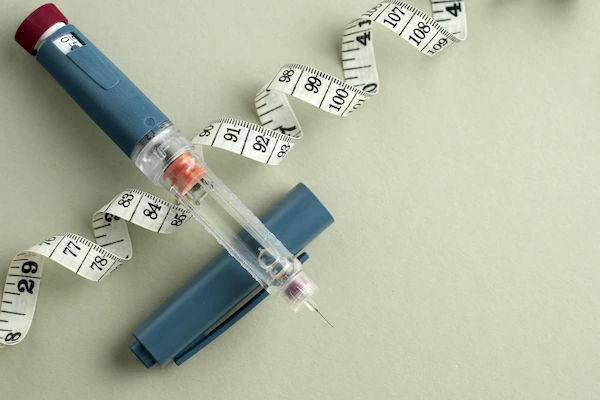Hypoglycemia vs. Hyperglycemia: The Key Differences
Learn the key differences between hypoglycemia and hyperglycemia, including their causes, symptoms, diagnosis, and treatment options.

Written by
Last updated on 3rd Jul, 2025
Blood sugar balance is a crucial aspect of maintaining overall well-being. The two states of concern are hypoglycaemia (blood glucose levels of less than 70 mg/dL) and hyperglycaemia (exceeding 125 mg/dL when fasting or beyond 180 mg/dL after eating). Symptoms for both can range from mild to life-threatening without careful and timely intervention.
Stable blood sugar levels can enhance energy, support weight management, improve focus, and reduce the risk of diabetes-related complications. This blog delves into the key differences between both conditions, their causes, symptoms, diagnosis, and treatment approaches.
Causes and Risk Factors of Hypoglycemia and Hyperglycemia
Hypoglycaemia and hyperglycaemia are common blood glucose disorders with various underlying causes.
Low blood sugar (hypoglycaemia) results from miscalculated insulin doses or timings, skipping meals, prolonged fasting during physical activity, or alcohol consumption, particularly on an empty stomach.
Conversely, hyperglycaemia often arises from insufficient insulin production, inappropriate medication dosing, and excessive carbohydrate intake without adequate insulin response. Physical or emotional stress, including infections and trauma, can also trigger hyperglycaemia.
Hypoglycaemia may be exacerbated by certain diabetes treatments, a tendency to skip meals, and specific medications.
High-risk factors for hyperglycaemia are more closely associated with type 2 diabetes, obesity, sedentary lifestyles, and elevated stress levels.
Therefore, monitoring and management of these conditions are imperative for maintaining healthy blood sugar levels.
Symptoms of Hypoglycemia and Hyperglycemia
It is important to recognise both the symptoms of hypoglycemia and hyperglycemia for suitable management.
Common Symptoms of Hypoglycemia
Symptoms of hypoglycaemia can manifest quickly and vary among individuals. Key symptoms include:
Irritability
Confusion
Shakiness
Sweating
Palpitations
Increased appetite
Extreme tiredness
These symptoms often arise when blood sugar levels drop significantly below 70 mg/dL. Prompt recognition and management are essential to prevent more severe complications.
Common Symptoms of Hyperglycemia
Hyperglycaemia, or high blood sugar, develops gradually and may require medical attention if left unmanaged. Symptoms include:
Extreme thirst
Frequent urination
General tiredness
Blurred vision
Slow-healing wounds
Regular monitoring of blood sugar levels is essential to manage hyperglycaemia effectively and prevent complications.
Recognising Common Symptoms
Hypoglycaemia and hyperglycaemia share common symptoms, which can complicate the differentiation between the two conditions. Symptoms include:
Fatigue
Blurred vision
Regular blood sugar testing is crucial for accurate diagnosis and effective management of these issues. Monitoring helps ensure appropriate interventions are taken to maintain optimal health.
Diagnosis of Hypoglycemia and Hyperglycemia
The following diagnostic tools help healthcare professionals identify and manage hypoglycaemia and hyperglycaemia:
Diagnosing hypoglycemia usually requires blood glucose testing to confirm low blood sugar levels. Continuous glucose monitoring may sometimes track blood glucose fluctuations over time.
On the other hand, diagnosing hyperglycemia usually begins with a fasting plasma glucose test, which measures blood sugar after overnight fasting.
An oral glucose tolerance test is a valuable tool for assessing how the body processes glucose over a specific period.
Alongside this, the haemoglobin A1c (Glycated haemoglobin) test provides a comprehensive view of long-term blood sugar control, offering an average of glucose levels over several months.
Together, these tests offer a detailed snapshot of glucose regulation in the body.
Management and Treatment for Hypoglycemia and Hyperglycemia
Numerous treatment approaches and adjustments in lifestyle measures are vital to control hypoglycemia and hyperglycemia effectively.
Treatment Options for Hypoglycemia
After a healthcare provider recommends fast-acting sugars like glucose tablets, adjustments to oral medications, or glucagon, patients may want to consider additional options. Foods such as bread with jam can also help stabilise blood sugar levels.
Treatment Options for Hyperglycemia
When blood sugar levels indicate the need for insulin or oral medication, managing hyperglycaemia also involves dietary modifications, increased physical activity, and regular blood sugar monitoring.
Lifestyle Changes to Prevent Both Conditions
Hyperglycemia and hypoglycemia can be managed with lifestyle modifications. Adopting a diet plan, physical exercise, regular meal times, and blood sugar monitoring routines could curb even the worst glucose swings.
Complications in Hypoglycemia and Hyperglycemia
If left untreated, both hypoglycaemia and hyperglycaemia can lead to serious complications, although the risks are generally more severe with hyperglycaemia.
Potential complications of untreated hypoglycaemia include cognitive issues, seizures, severe heart problems, and, in extreme cases, death.
Long-term hyperglycaemia can result in lasting damage, such as neuropathy and nephropathy.
Hyperglycaemia can also lead to retinopathy, which affects vision, increases the risk of cardiovascular diseases, and compromises immune function, making individuals more susceptible to infections.
Addressing these conditions promptly is essential to prevent irreversible damage and maintain overall health.
Prevention Strategies for Hypoglycemia and Hyperglycemia
Preventing hypoglycaemia is crucial for maintaining glycemic stability. Diabetics should regularly monitor their blood sugar levels to avoid sharp declines and consider eating small, frequent meals to help prevent low blood sugar.
Regular exercise and appropriate meal planning are also important for effective management.
Adhering to medication regimens, such as taking prescribed medications and avoiding foods high in unhealthy carbohydrates, plays a significant role in preventing these undesirable episodes.
Consistent blood sugar checks are essential for controlling both hypoglycaemia and hyperglycaemia, allowing individuals to understand their blood sugar patterns better.
This proactive approach contributes to the long-term management of diabetes, promoting optimal health and well-being by helping to avoid serious complications.
Impact of Both Conditions on Daily Life
Managing both hypoglycemia and hyperglycemia effectively is essential to maintaining independence, staying active, and leading a productive life.
Hypoglycaemia can significantly disrupt daily life, causing sudden energy dips, difficulty concentrating, mood swings, and reduced productivity. These episodes may also create anxiety about managing day-to-day activities.
Hyperglycaemia symptoms like fatigue, increased thirst, and frequent urination are inconvenient and interfere with work, social interactions, and other tasks.
Over time, chronic hyperglycaemia can lead to complications such as neuropathy, which may limit mobility and physical abilities, affecting routine activities and requiring lifestyle adjustments.
Diet and Nutrition for Hypoglycemia and Hyperglycemia
Making the right food choices is crucial to successfully managing both conditions.
People should prioritise eating complex carbohydrates and protein while managing hypoglycemia to maintain consistent energy levels and avoid blood sugar drops.
Avoiding too much sugar is also crucial since it might cause blood glucose levels to fluctuate quickly.
A balanced diet that emphasises whole grains, vegetables, lean meats, and healthy fats is crucial for those with hyperglycemia to maintain stable blood sugar levels.
Limiting processed meals rich in sugar and refined carbs is essential since they might cause blood glucose to rise.
Conclusion
Hypoglycemia and hyperglycemia are blood sugar imbalances, but their causes and effects differ. Hypoglycemia involves low blood sugar levels that lead to immediate symptoms and require quick intervention. Conversely, hyperglycemia is high blood sugar levels that develop gradually and pose significant long-term health risks if left unmanaged.
Proper management of both conditions is crucial for maintaining overall health. By understanding the differences in causes, symptoms, treatments, and prevention strategies, individuals can take control of their health, effectively managing blood sugar levels and reducing the risk of complications.
Consult Top Diabetologist
Consult Top Diabetologist

Dr. Vivek D
General Physician
4 Years • MBBS
Bengaluru
PRESTIGE SHANTHINIKETAN - SOCIETY CLINIC, Bengaluru

Dr. Nilotpal Mitra
General Physician/ Internal Medicine Specialist
20 Years • MBBS, PGDGM ( Geriatric Medicine), ACMDC (an Advance course in Diabetes and cardiovascular diseases from PHFI and WHF )
Kolkata
MCR SUPER SPECIALITY POLY CLINIC & PATHOLOGY, Kolkata

Dr. Kumari Nisha
General Physician/ Internal Medicine Specialist
5 Years • MBBS AFIH
Bengaluru
PRESTIGE SHANTHINIKETAN - SOCIETY CLINIC, Bengaluru

Dr. Arthi S
Family Physician
3 Years • MBBS
Bengaluru
PRESTIGE SHANTHINIKETAN - SOCIETY CLINIC, Bengaluru

Dr Syed Mateen Pasha
General Physician
2 Years • MBBS
Bengaluru
PRESTIGE SHANTHINIKETAN - SOCIETY CLINIC, Bengaluru


